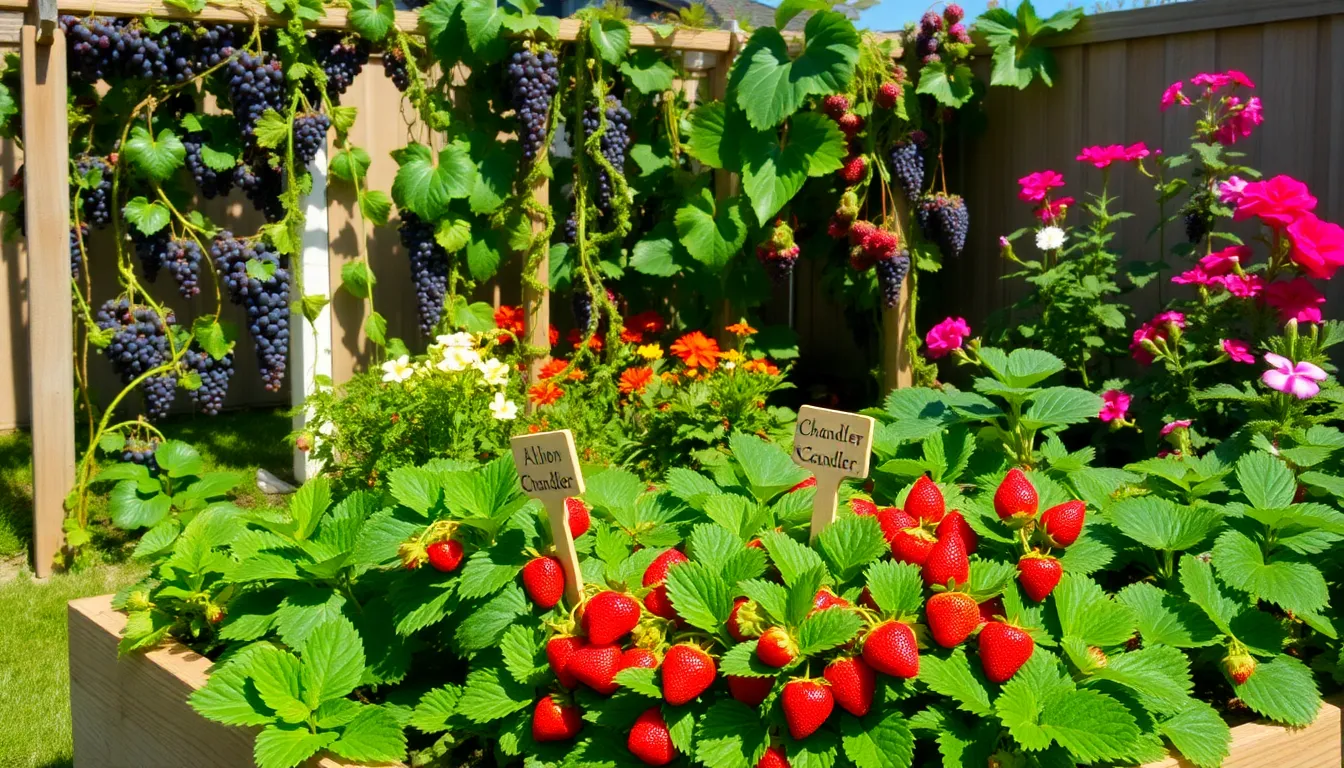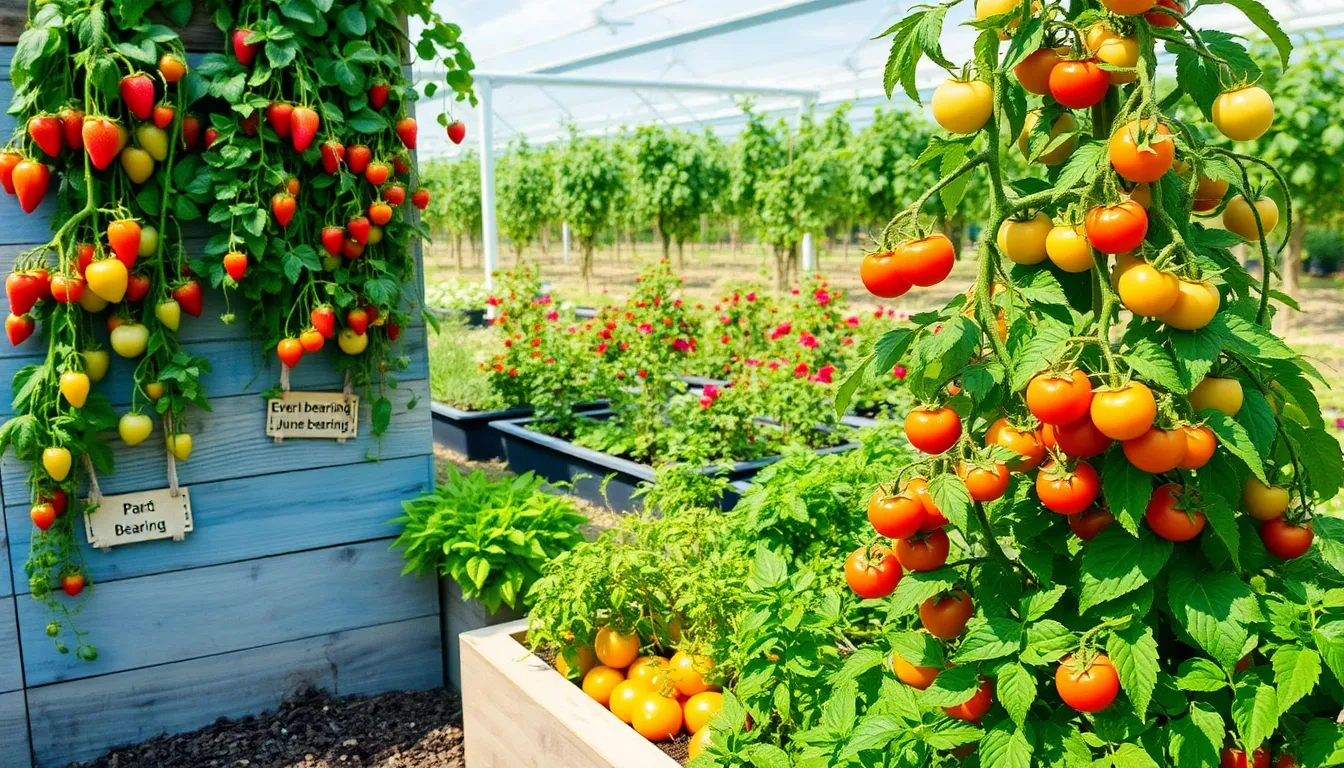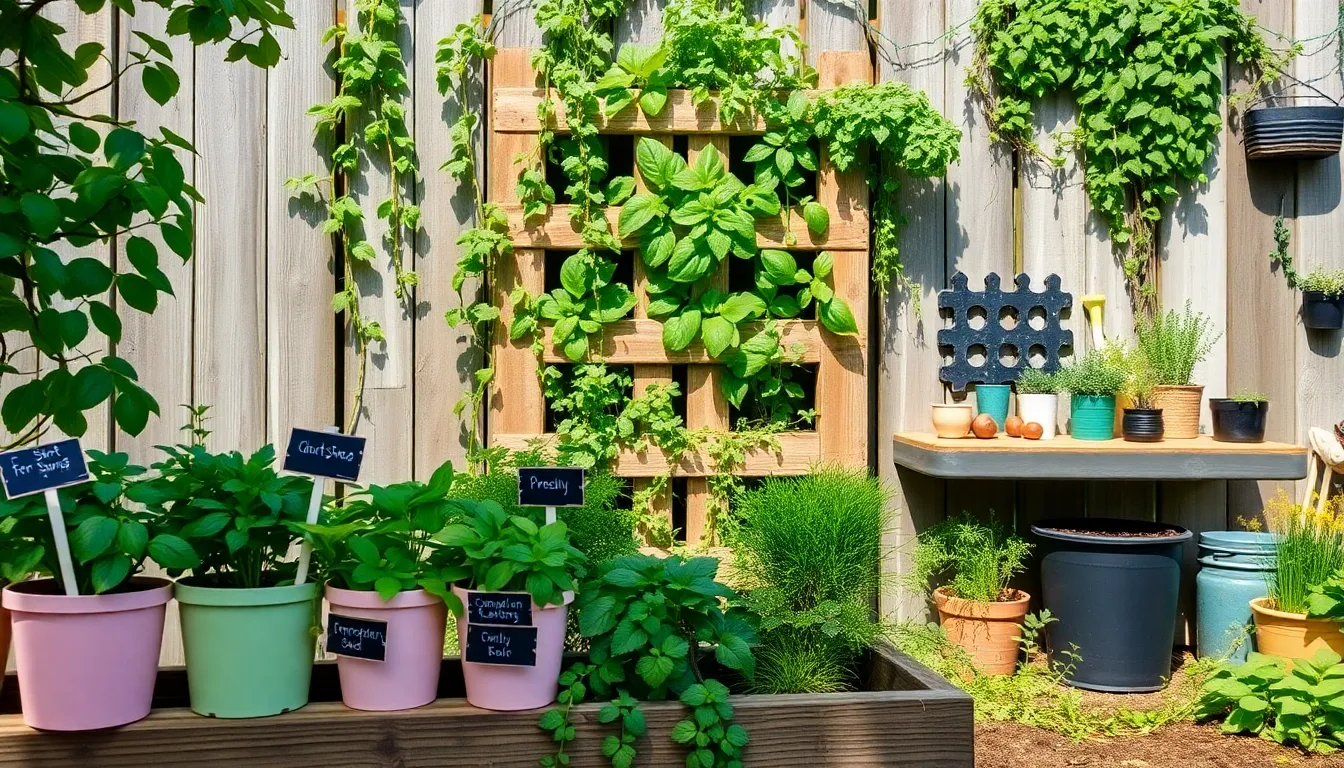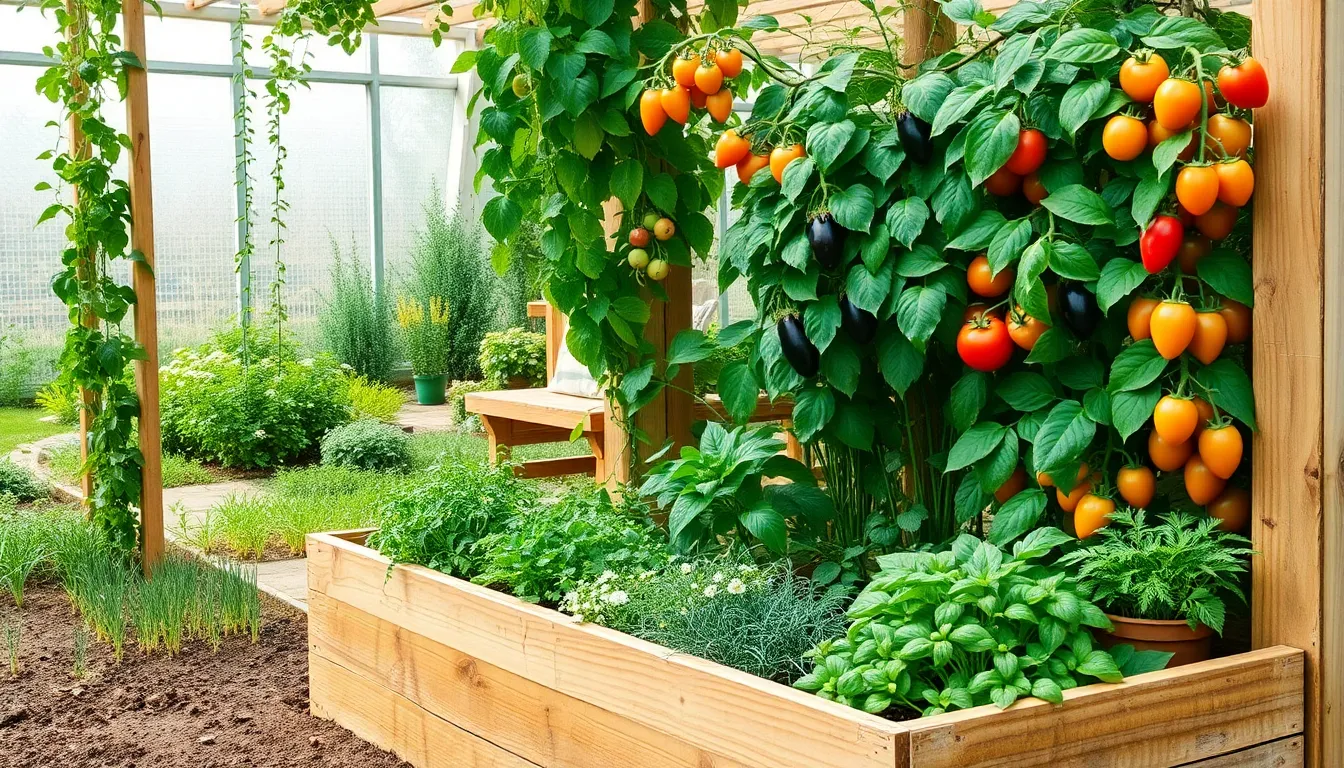There’s a certain magic in stepping outside your door and plucking fresh, sun-warmed fruit from your very own garden. Whether you’re a seasoned gardener with years of experience under your belt or a beginner eager to dig into the world of horticulture, cultivating a fruit garden offers unparalleled rewards. Not only does it provide a bounty of fresh produce, but it also transforms your outdoor space into a vibrant, thriving sanctuary.
In this article, we’re excited to share 11 stunning fruit garden inspirations that will ignite your imagination and guide your green thumb. These ideas are designed to suit various spaces and climates, making them accessible whether you’re working with a sprawling backyard or a cozy balcony. You’ll discover innovative layouts, creative plant combinations, and insightful tips that cater to both your aesthetic desires and practical needs. Dive in with us, and you’ll soon be on your way to cultivating a fruit garden that is as beautiful as it is bountiful.
Choosing the Perfect Fruit Varieties
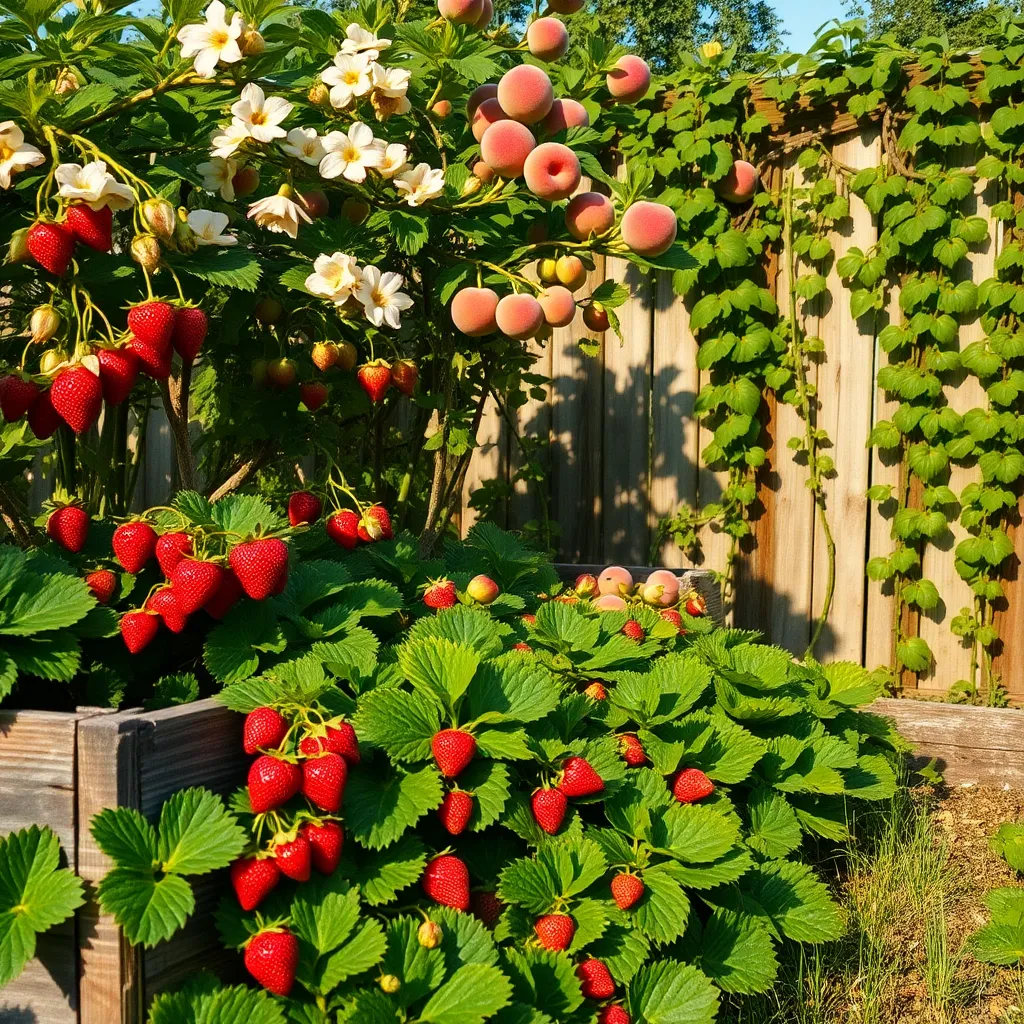
When choosing fruit varieties for your garden, consider both the climate and soil conditions of your area. Researching fruit species that thrive locally will increase your chances of a bountiful harvest.
Many fruits require specific soil types to flourish; for example, blueberries need acidic soil with a pH of 4.5 to 5.5. Conduct a soil test to determine the pH level and amend it as necessary to suit your chosen fruit varieties.
To ensure healthy growth, consider the water needs of your plants. While strawberries prefer consistently moist soil, it’s crucial to avoid overwatering as it can lead to root rot; aim for a balanced watering schedule that keeps the soil damp but not saturated.
Advanced gardeners might explore grafting techniques to enhance fruit production and disease resistance. Grafting compatible fruit varieties onto hardy rootstocks can yield more resilient plants and extend the growing season.
Designing a Stunning Orchard Layout
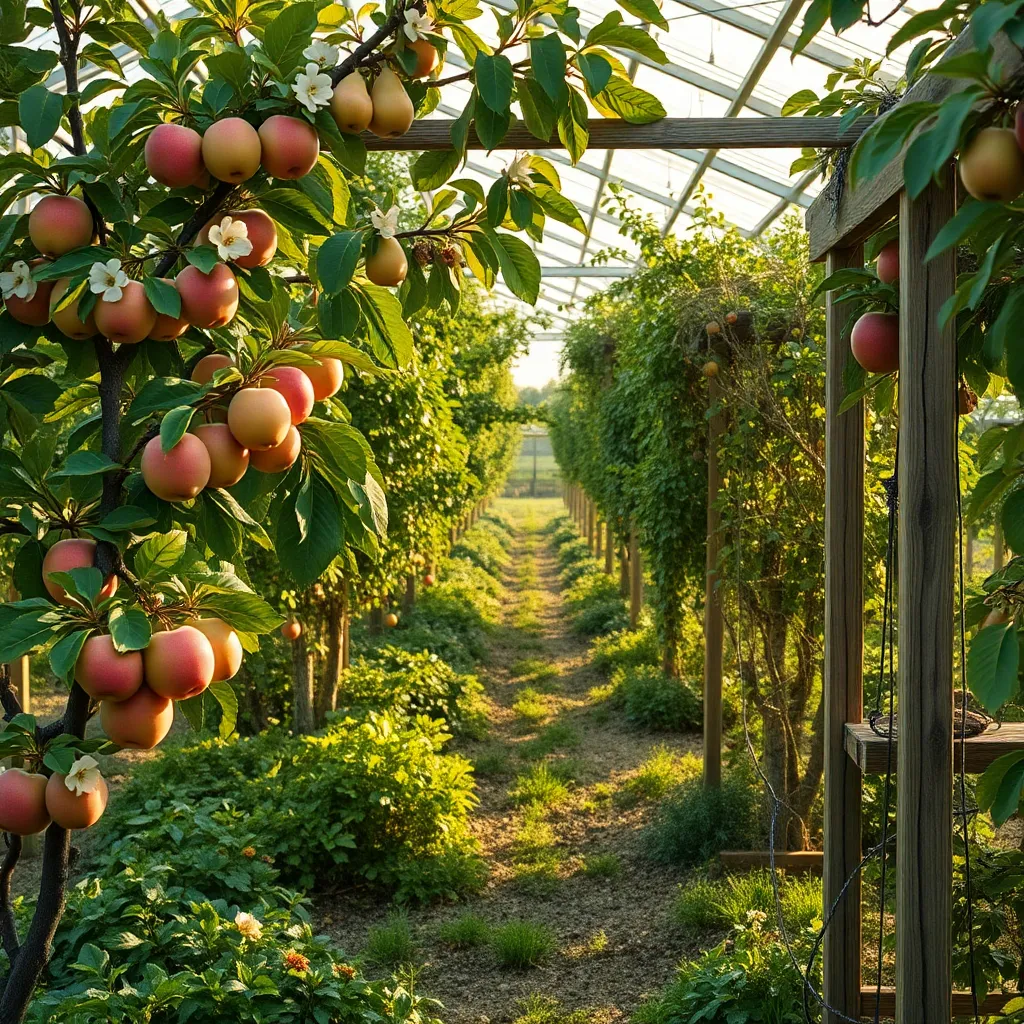
Designing a stunning orchard layout is both an art and a science, balancing aesthetics with practicality. Start by surveying your space to understand the natural light, wind patterns, and soil type, as these elements will influence your fruit tree selection and placement.
Consider the mature size of each fruit tree when planning your layout to ensure proper spacing. Adequate spacing not only prevents overcrowding but also allows for better air circulation, which is crucial for preventing diseases.
To create visual interest, mix different types of fruit trees with varying heights and foliage colors. This not only enhances the beauty of your orchard but also helps in cross-pollination, which can improve fruit yield.
Incorporate pathways and open areas to facilitate easy access for maintenance and harvesting. Design these pathways with materials like mulch or gravel to enhance drainage, reducing the risk of waterlogged roots.
Companion Planting for Fruit Gardens
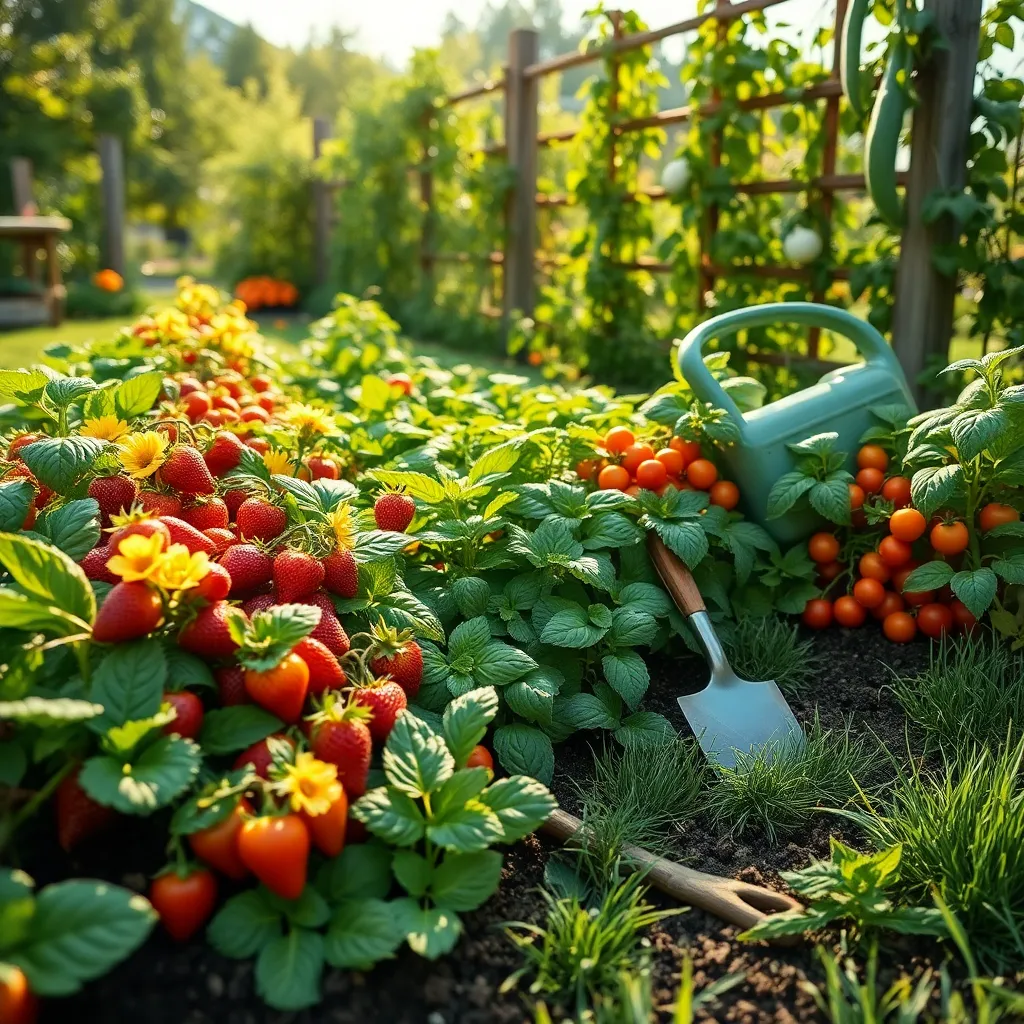
Companion planting is a strategic way to enhance your fruit garden’s productivity while naturally deterring pests. By pairing specific plants together, you can create a balanced ecosystem that benefits the growth and health of your fruit-bearing plants.
For beginners, it’s essential to start with a few basic combinations, such as planting strawberries with borage to attract pollinators and deter harmful pests. As you gain confidence, consider introducing advanced pairings like placing garlic around your fruit trees to ward off aphids and other insects.
Soil quality plays a vital role in the success of companion planting. Opt for well-draining soil enriched with organic matter, and consider using a soil testing kit to fine-tune your garden’s pH and nutrient levels.
Watering practices are equally important, especially when growing fruit plants alongside their companions. Ensure you water deeply and consistently, aiming for the early morning to reduce evaporation and fungal risks.
To maximize the benefits of companion planting, consider using a mix of herbs and flowers that not only contribute to pest control but also improve soil health. Plants like marigolds release compounds that repel nematodes, while legumes such as peas can fix nitrogen in the soil, providing essential nutrients for fruit trees.
Incorporating Edible Ground Covers
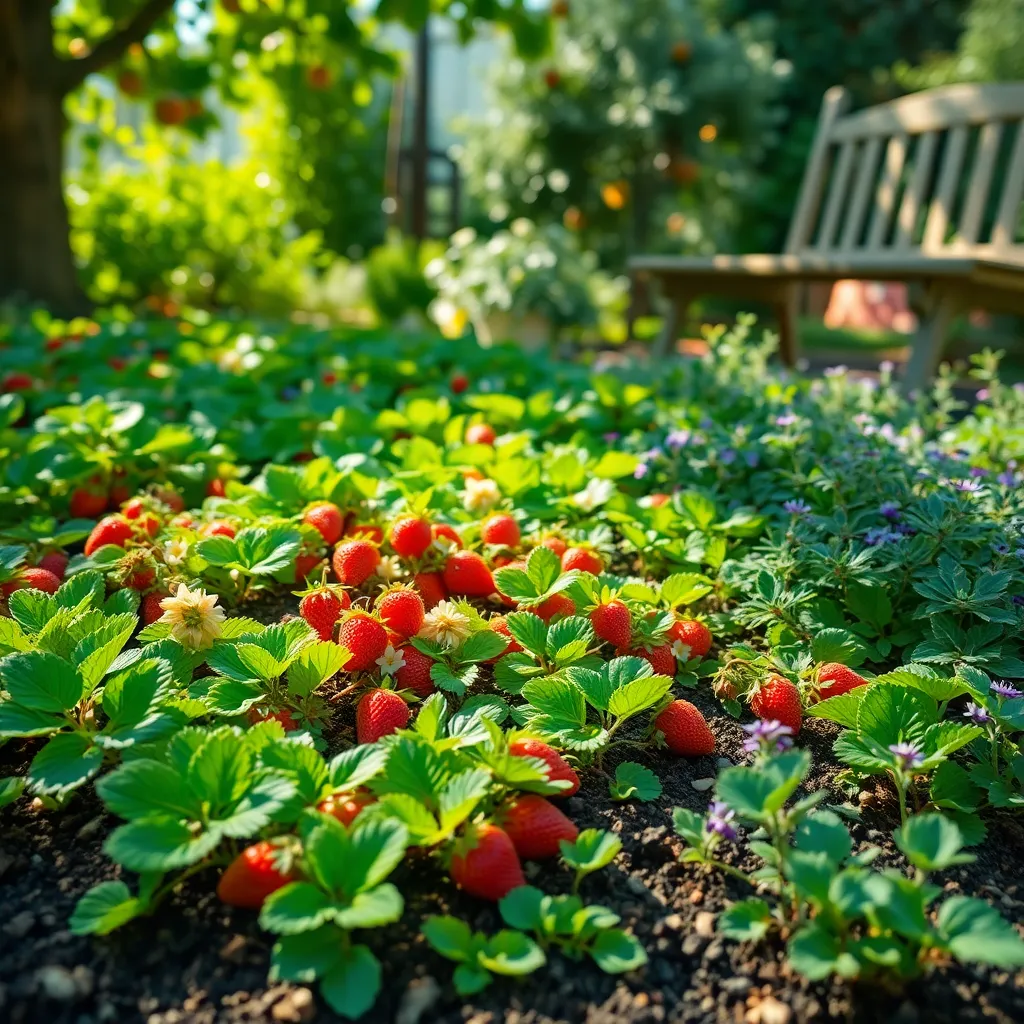
Incorporating edible ground covers into your fruit garden can enhance both its beauty and productivity. These plants not only fill in spaces between larger fruit trees and bushes but also help suppress weeds and retain soil moisture.
Consider using plants such as strawberries, clover, or thyme as ground covers. Strawberries, for instance, are low-growing and spread quickly, providing a delicious bonus harvest while protecting the soil.
For those just starting, strawberries are a great choice due to their easy care. They thrive in well-drained soil with a pH of 5.5 to 6.8 and need about 1 inch of water per week.
More advanced gardeners might experiment with less common options like creeping thyme, which offers a fragrant and edible leaf. While thyme prefers slightly alkaline soil, it also requires full sun and minimal watering once established, making it a water-wise choice.
To maximize success, ensure your ground covers are compatible with the existing fruit plants in terms of sunlight and water needs. Maintain a regular routine of checking soil moisture and weeding, especially in the earlier stages of establishing your ground cover.
Creating Vertical Fruit Garden Spaces
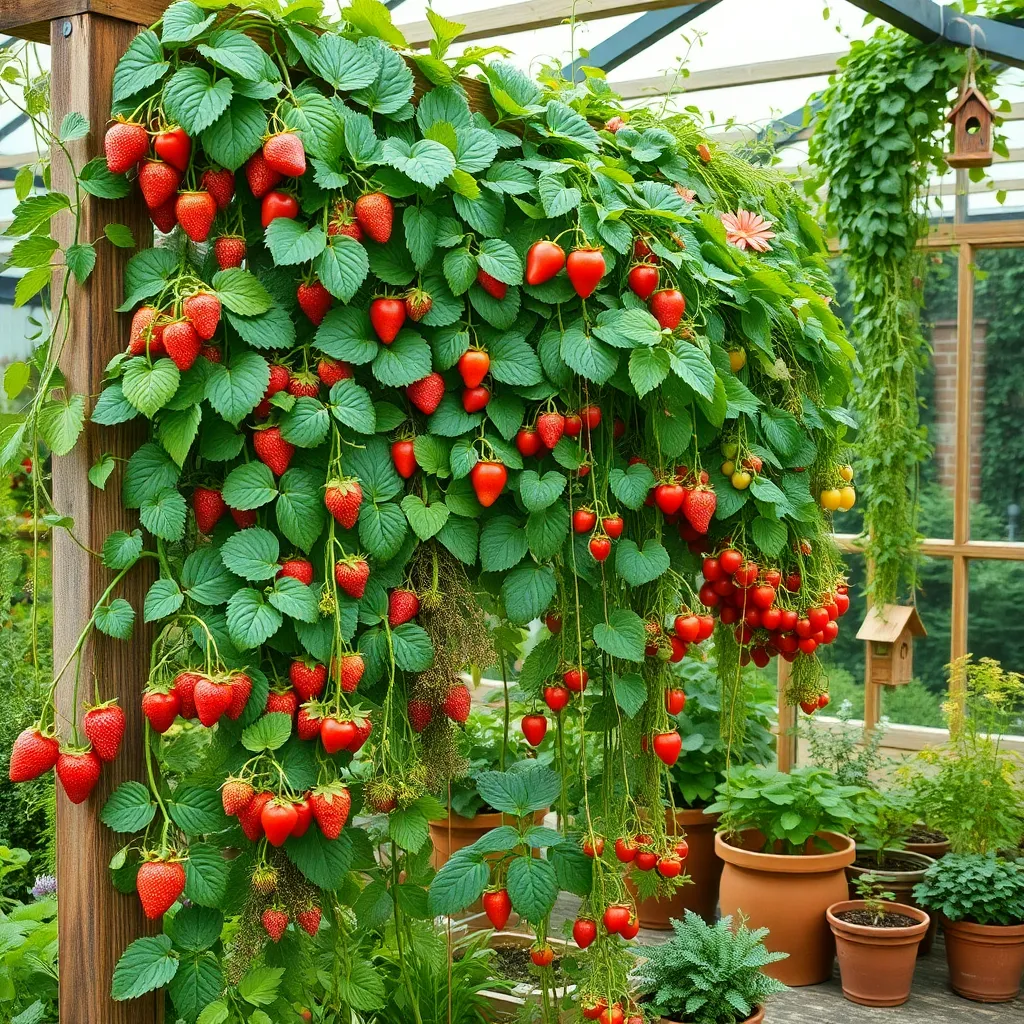
Transforming vertical spaces into productive fruit gardens is a creative way to maximize small areas. It allows you to grow a variety of fruits even when ground space is limited, making it ideal for urban gardeners or those with compact yards.
Begin by selecting the right plants that thrive in vertical environments, such as strawberries, raspberries, and grapevines. These plants are naturally suited for vertical growth and can be trained to climb up trellises or hang from containers.
Use lightweight, well-draining soil to ensure your plants have the support they need without overwhelming their structures. A mix of potting soil and perlite works well to keep the roots aerated and prevent waterlogging.
For successful fruit production, regular watering and fertilizing are crucial. Install a drip irrigation system if possible, as it provides consistent moisture and can be paired with a liquid fertilizer every few weeks.
Maximizing Small Garden Yields
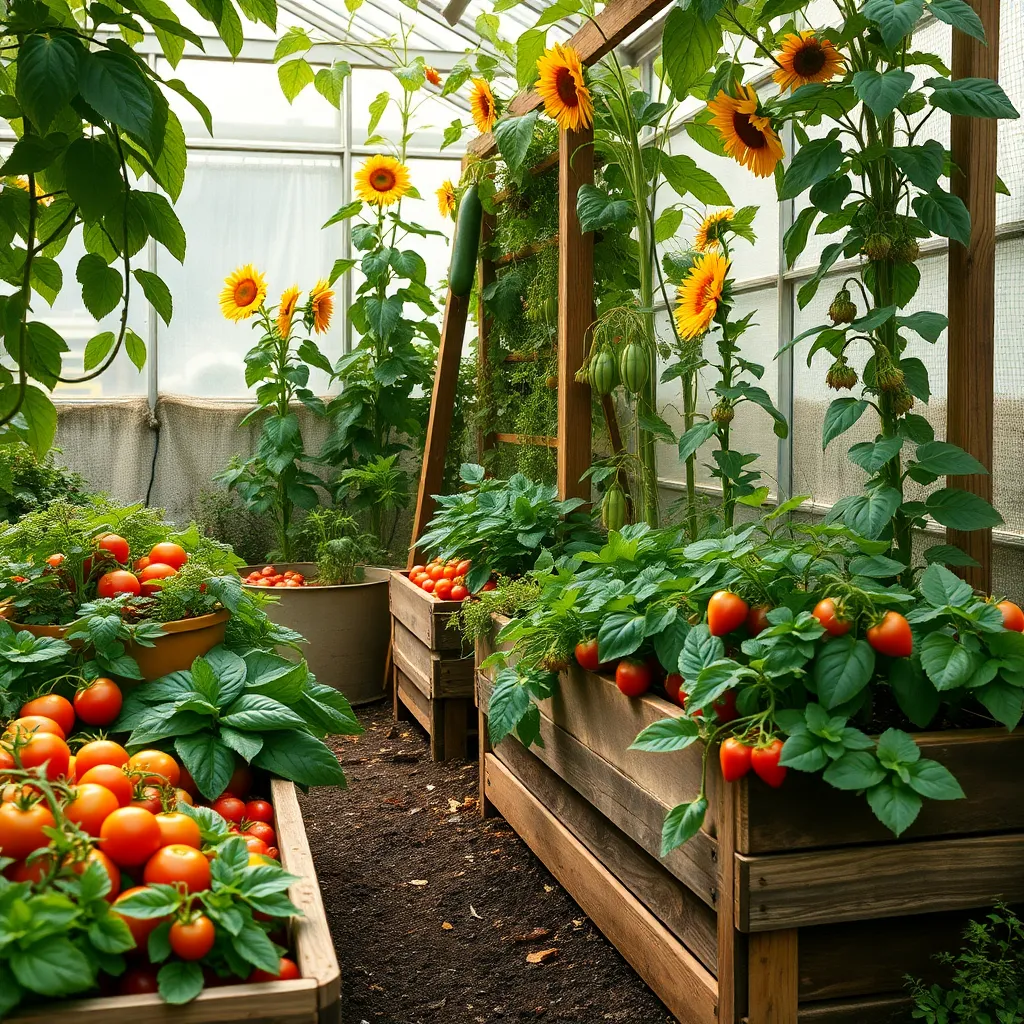
Maximizing small garden yields begins with choosing the right varieties of fruit that thrive in compact spaces. Consider planting dwarf or bush varieties, such as strawberries, which require less room but still produce abundantly.
For optimal growth, ensure your soil is well-draining and rich in organic matter, as this provides essential nutrients. Incorporating compost or aged manure into your garden bed will enhance soil fertility and improve plant health.
Strategically using vertical space can significantly boost your garden’s productivity. Trellises and hanging baskets allow you to grow climbing fruits like raspberries and grapes, making the most of limited ground area.
Regular maintenance is key to sustaining high yields throughout the growing season. This includes consistent watering, especially during dry spells, and mulching to retain soil moisture and suppress weeds.
Integrating Pollinator-Friendly Flowers
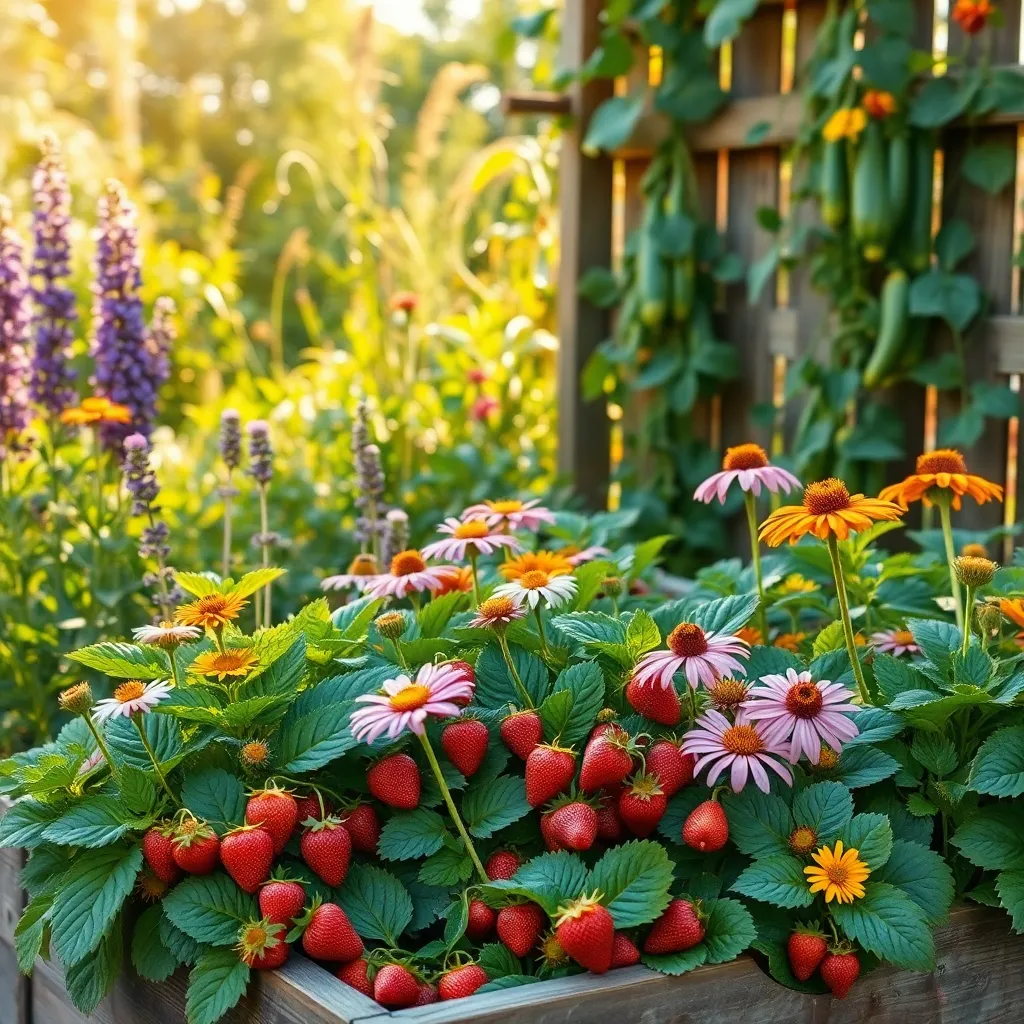
Introducing pollinator-friendly flowers into your fruit garden can dramatically boost your fruit yields. By attracting bees, butterflies, and other pollinators, you ensure that your fruit plants receive the necessary pollination for fruit development.
Choose flowers that bloom at different times to provide a consistent food source for pollinators throughout the growing season. Consider planting varieties like lavender, coneflower, and marigold, which are known to attract a wide range of beneficial insects.
For beginners, start by planting a few easy-to-grow varieties such as sunflowers and zinnias. These flowers are not only beautiful but also require minimal care, thriving in well-drained soil and needing only moderate watering.
Experienced gardeners might experiment with native wildflowers, which are often well-suited to the local climate and soil. Native plants tend to be more resilient and can provide a vital habitat for local pollinators, enhancing the biodiversity of your garden.
- Tip: Plant in clusters to create a more significant visual impact and make it easier for pollinators to find the flowers.
- Tip: Allow some areas of your garden to remain a bit wild to provide shelter and nesting sites for pollinators.
Integrating these flowers alongside your fruit plants can also help with pest management. Many pollinator-friendly plants repel common garden pests, reducing the need for chemical interventions.
Seasonal Maintenance for Fruit Gardens
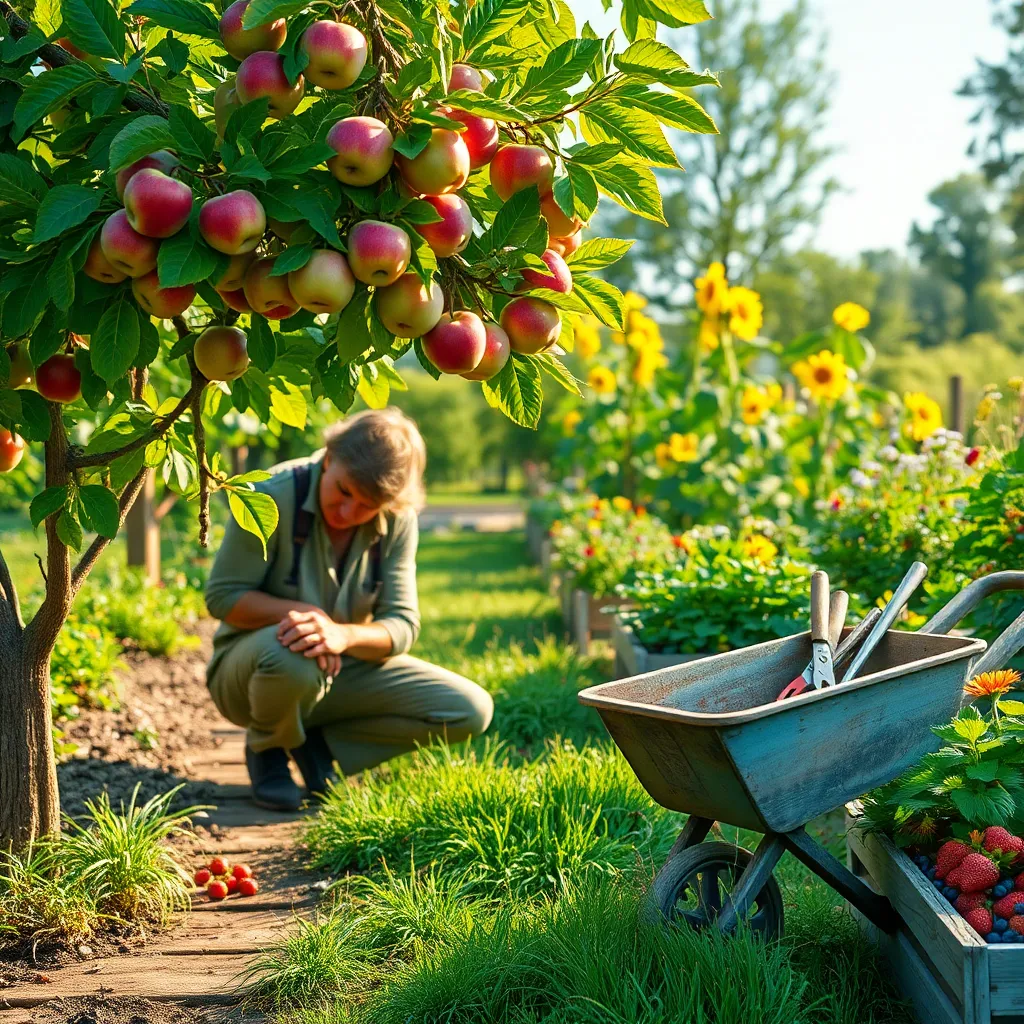
When maintaining your fruit garden seasonally, start by assessing the overall health of your plants. Regular inspections help identify any early signs of disease or pest infestation, allowing you to take prompt action.
In the spring, focus on preparing your soil for the growing season. Add organic matter such as compost or well-rotted manure to enrich the soil and improve drainage.
Summer requires careful attention to watering and pest control. To keep your fruit plants healthy, water deeply but infrequently, ensuring the soil remains moist but not waterlogged.
Transitioning into fall, it’s time to think about pruning and preparing your plants for winter. Prune fruit trees to remove dead or overcrowded branches, which will help stimulate new growth in the coming year.
Winter is an excellent time for planning and maintenance tasks that don’t require active planting. Consider applying a layer of mulch around the base of your plants to protect the roots from frost and retain soil moisture.
For an advanced tip, test your soil’s pH and nutrient levels annually. Adjusting the pH with lime or sulfur can significantly impact fruit yield and quality, giving your garden just the boost it needs.
Organic Pest Control Strategies
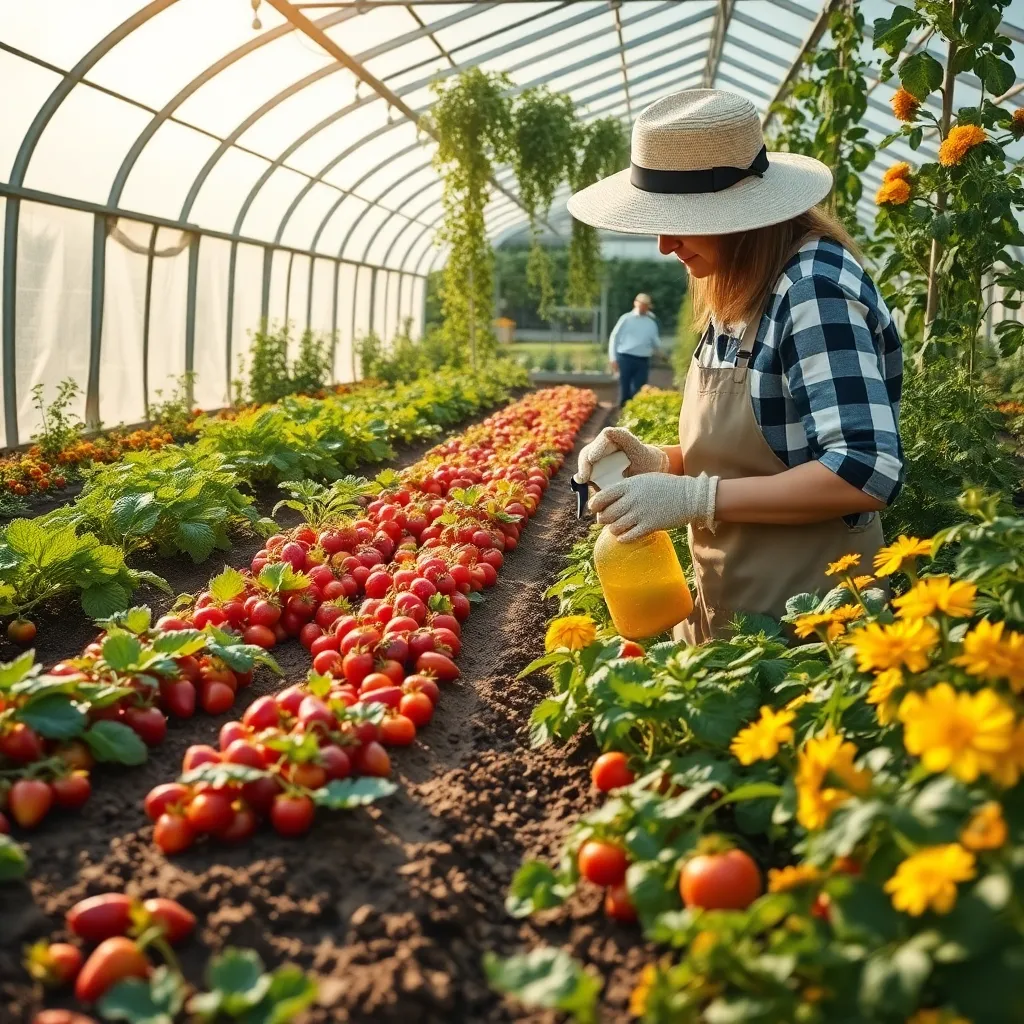
Organic pest control is essential for maintaining a healthy fruit garden while protecting the environment. Start with encouraging beneficial insects like ladybugs and lacewings, which naturally control aphid populations.
Companion planting is a powerful strategy to deter pests while promoting plant health. Planting marigolds or nasturtiums among your fruit crops can repel nematodes and aphids, reducing the need for chemical interventions.
Handpicking pests is a simple yet effective method for small gardens. Regularly inspect plants in the early morning, when pests are most active, and remove them by hand to keep populations under control.
For those dealing with more persistent pest problems, homemade sprays can be a valuable tool. A mixture of water, mild soap, and neem oil can be applied to fruit plants to deter insects without harming beneficial organisms.
Implementing these organic pest control strategies not only keeps your fruit garden thriving but also ensures a sustainable ecosystem. By integrating these techniques, you create a balanced environment that reduces pest issues naturally.
Harvesting Techniques for Optimal Flavor
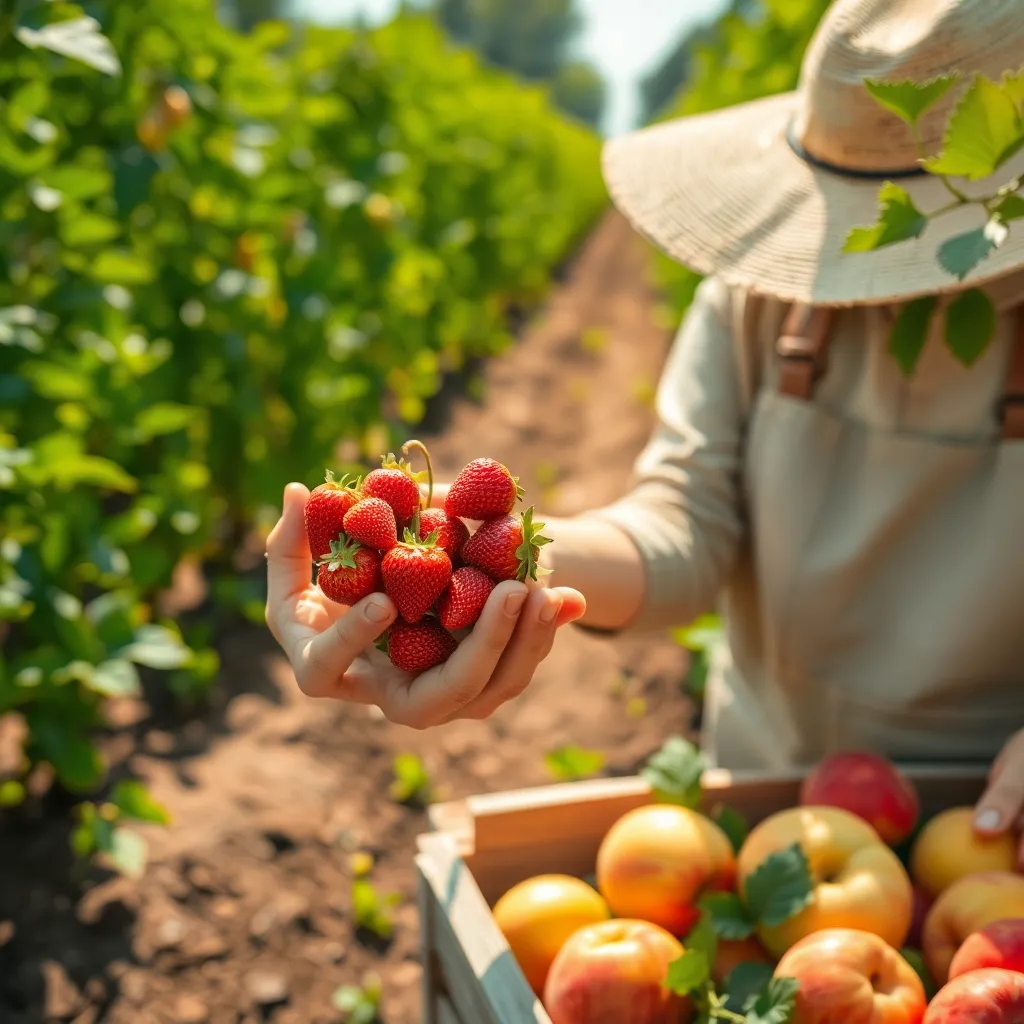
To maximize the flavor of your fruit harvest, it’s crucial to understand the perfect timing for picking. Harvesting too early can result in bland flavors, while waiting too long might lead to overripe or spoiled fruit.
When it comes to fruit like tomatoes and strawberries, picking them during the early morning is ideal. The cooler temperatures help preserve their natural sugars, ensuring a sweet and delicious taste.
For citrus fruits, a slight twist is often all that’s needed to determine ripeness; ripe fruits will detach easily. This technique prevents damage to the tree, which is crucial for maintaining healthy future yields.
Experienced gardeners recommend using pruning shears for tougher fruits such as apples or pears. This technique avoids bruising and preserves the integrity of the fruit, enhancing both flavor and storage life.
For those growing grapes, testing a few for sweetness before a full harvest is essential. This ensures your entire batch is ready, and you avoid picking green, tart grapes.
Advanced gardeners can experiment with staggered harvesting to enjoy fruits at various stages of ripeness. This not only extends the harvest season but also allows you to savor the nuanced flavors as they develop over time.
Preserving Your Fruit Garden Bounty
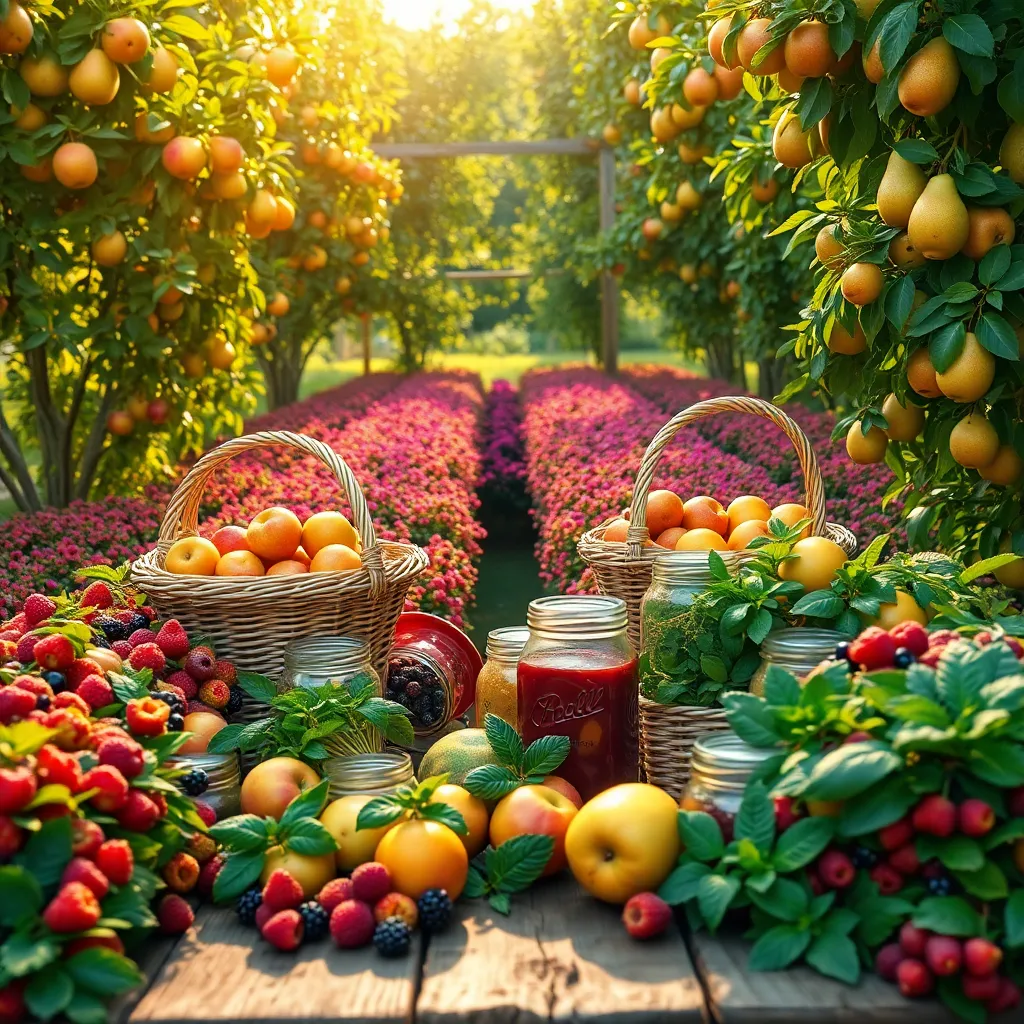
Preserving the bounty from your fruit garden requires thoughtful planning and execution. Start by identifying which fruits are best suited for specific preservation methods like canning, freezing, or drying to maintain their flavor and nutritional value.
Freezing is one of the easiest ways to preserve fruits like berries, peaches, and cherries. Ensure the fruits are thoroughly washed and dried before spreading them on a baking sheet to freeze individually, which prevents clumping.
For those interested in canning, understanding the basics of water bath canning is essential, especially for high-acid fruits such as tomatoes and apples. Use sterilized jars and follow tested recipes to ensure the safety and quality of your preserved goods.
Drying fruits is another excellent option, particularly for apples, apricots, and grapes. Utilize a dehydrator or set your oven to a low temperature, ensuring consistent drying by slicing fruits to uniform thicknesses.
Advanced gardeners might explore fermentation, which can enhance flavors and add nutritional benefits to certain fruits. Experiment with small batches to find the right balance of salt and time, which is crucial for successful fermentation.
Consider making fruit jams or jellies, which can be a delightful way to enjoy your garden’s produce year-round. Use a proper pectin balance and precise cooking times to achieve the perfect consistency and flavor.
Conclusion: Growing Success with These Plants
In exploring the ’11 Beautiful Fruit Garden Inspirations,’ we’ve uncovered a treasure trove of relationship wisdom rooted in nature’s beauty. From nurturing growth like a flourishing apple tree to embracing diversity akin to a vibrant berry patch, each concept invites us to cultivate deeper connections. We’ve seen the importance of patience, much like waiting for a tree to bear fruit, and the value of consistency mirrored in the changing seasons. Communication, like the intertwining vines of a grape arbor, nurtures unity, while resilience, similar to a hardy pear surviving the elements, strengthens bonds. Trust, like a garden’s soil, provides the foundation for growth, and mutual support, as seen in companion planting, enhances harmony.
As a next step, consider identifying one concept that resonates with you and share it with your partner or a friend. Discuss how you might integrate this lesson into your relationship. Embrace this opportunity for growth and renewal.
Remember, relationships are like gardens—they require constant care and attention. Save this article to revisit these timeless inspirations as you continue to cultivate love and understanding in your relationships. As you apply these principles, envision a future where your relationships blossom into sources of joy and fulfillment. Together, let’s nurture the garden of connection and watch it thrive.

